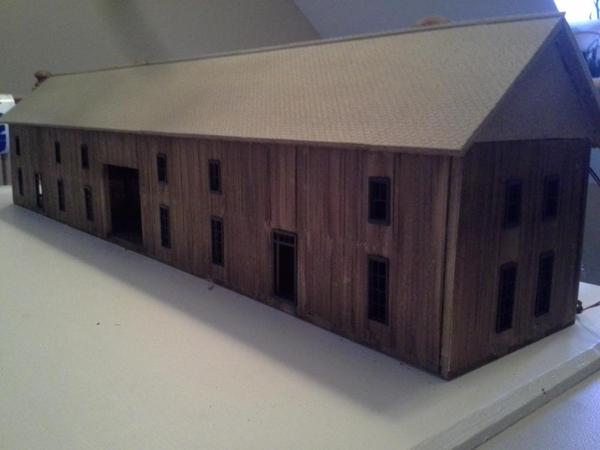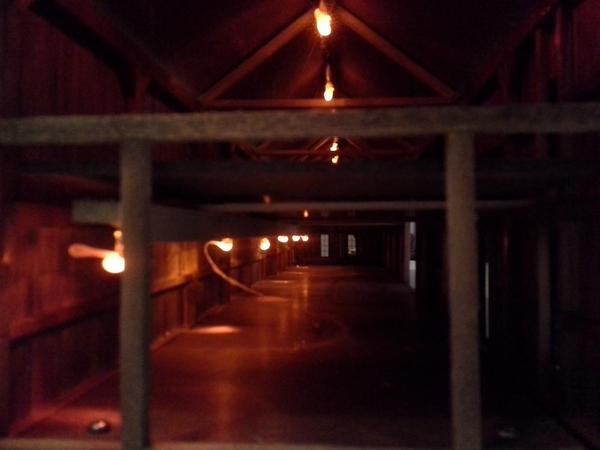Ok, bear with me, as I feel like this is an intervention...
First of all, I feel like I need to come out of the closet- I am a History Nerd.
There- I said it. I am a self proclaimed History Nerd, specifically, local history. I am such a HN, (History Nerd), I am president of the local Historical Society & I give presentations to County Historical & Genealogical Societies. Now that you know "my history", let me get on to what this post is all about...
I had always heard stories growing up, (I am 37), of the "Tile Mill" along the railroad tracks. But, no one knew anything about it, and no one living remembers it ever running. Now, you don't just build a Clay Tile Mill overnight, and close it up before anyone was the wiser. I've spoke about it to groups, and I have tried describing how a tile mill worked, but without any real information, layout of the factory or pictures, it was hard to explain to "visual" learners. So here is an account of how I researched this long gone structure & part of our railroad history.
I started by interviewing the first person I thought of- my dad. Since my family got off the boat from Sweden & settled here in 1874, I figured I should have an advantage to my research.
I came up with some info, and this picture from my great aunt...
These two photos show two different angles of the building. The 1st photo shows the south side, and the second photo shows the collapsed north end.
Since I could not get permission to actually visit the site, I went online to one of my favorite pages, http://www.historicaerials.com/. I am i no way connected to this site. This site allows you to look up maps, and there is even measuring devices to allow you to get dimensions. So this is what I found-
The main building was 24x150. You can also see the round kiln to the left, the shadow of a giant chimney, and the shadows of another building on the north, (top). This is 1952.
Now, take a look at the 1970 picture...
A-HA! It looks like the chimney collapsed and fell to the east, taking out part of the north side! These photos are also available for free download through the US Geological Survey website. However, the USGS doesn't have online dimension measuring...
So finally, I get permission to go on the property, and guess what... The main building foundation WAS 24x150, and there was a foundation for the north building, and it was 30x72. I also found a band from around the brick chimney, which was 6' square. I found some grey round bottom slate, as well as some, (surprise) CLAY block and some obvious machinery bases in the north room. There was also the remnants of a 19' brick fire box, for a stationary steam boiler. So, I now know the dimensions & material of both buildings as well as the size of the brick kiln.
Some more digging found this info on the Ohio Secretary of State website...
So now I have a date...
Google books online search engine found this-
Well, if they incorporated with capital stock, that must mean that somewhere there has to be a certificate...
There was
So, all this information has now allowed me to construct the main drying barn. I used poplar that I cut down to save on costs of basswood from the big box stores, and coffee stirs purchased in a 1000 quantity off of amazon.
I still need to build the ventilators as well as the north boiler room and the chimney, but at least I have LED lighting installed...
I built it all out of scale poplar, it is all post & beam. I used commercially available windows & doors & placed them after some interviews with a gent who remembered the building after they stopped producing.
There was one hearth left intact from the kiln-
and here I am standing on the 19' base for the stationary boiler, the top of the bricks are 9' off the ground.
Some more research & I discovered that my great grandfather actually worked here. He owned & ran the team of horses that pulled the slip scraper to harvest the clay from the lake about 600' away. My great uncle then hand loaded the "narrow gauge" cars and used his horse to pull them along the "dinky line" to the mill. So now I need to put in some N gauge track with some n gauge dump cars pulled by some o gauge horses...
Building this structure, (which I am not done with) has been a great peak into the past of my community & my family. It will also give me a very visual tool to use when teaching about the early industry of our town.
Updates will follow... ![]()














